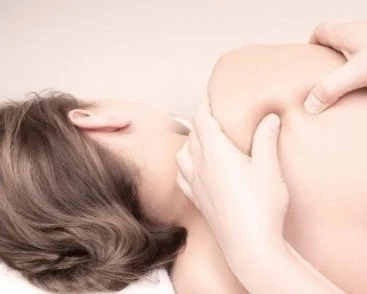Welcome to Bristol Bowen Therapy
I had my first experience of The Bowen Technique in 2006 when I found it quickly resolved the long-term lower back pain I’d lived with since falling off a horse as a teenager. Wanting to help others similarly struggling with pain, whether from injury, or any manner of physical problems, I made the decision to train as a Bowen Technique practitioner myself in 2008, and as soon as I had qualified, I set up Bristol Bowen Therapy in 2010. For more information about my Bowen journey, see About Louise.
What is Bowen Therapy?
Nowadays, the term Bowen Therapy is commonly used to describe a number of interpretations of remedial bodywork based on the methods used by Tom Bowen, an Australian bodyworker who was active from 1950’s to 1970’s. What we now refer to as The Bowen Technique, Tom himself thought of as ‘soft-tissue osteopathy’. Essentially, it is a hands-on, complementary therapy which aims to stimulate and facilitate the body's natural capacity for self-regulation and healing. Bowen moves are applied at precise points on the body, mostly using thumbs and forefingers. They are designed to challenge and stimulate the soft tissue and nerve pathways, creating a focus for the brain in addressing dysfunction and imbalance. Unlike some other types of physical therapy, clients often report that Bowen treatment feels like it’s “getting to the root of the problem”. For some, just 2 to 5 treatments can be enough to resolve conditions that have caused years of pain or dysfunction. For more information about Tom, and the origins of Bowen Therapy, please see FAQ’s.
What happens during a Bowen Treatment?
New clients will typically start their Bowen treatment with a session that includes a 15-20 minute consultation, during which presenting symptoms, lifestyle & medical history will be discussed, and some simple assessments carried out. Treatments take place on a therapy couch, if comfortable, otherwise, the client may be seated. Follow-up sessions usually last 50 minutes to an hour. No clothing needs to be removed - Bowen moves can either be done directly onto the skin, or through clothing, preferably light & loose-fitting. No forceful manipulation is used and the moves are non-invasive. Most clients find the treatment a deeply relaxing experience.
An unusual and typical feature of the Bowen Technique, is the use of short breaks between sets of moves, during which the practitioner usually leaves the room for around two minutes. These allow the brain time and space to ‘interpret’ and respond to the moves in the optimal way. A fundamental principle of Bowen is that it is the client doing the work, not the therapist who is simply facilitating a healing response via the moves made; and for this to happen the body is given some time and space alone.
Who uses Bowen Therapy?
Bowen Therapy is now used regularly by a wide range of people for their general health maintenance. These include those regularly participating in all types of sport/physical activity, who find it highly effective, not only for aiding recovery from injuries, but also in injury prevention, and enhancing performance; those with demanding jobs, both physical and desk-based, who find it helps relieve stiff, achy muscles and alleviates stress, as well as addressing poor postural habits; and also those who struggle with auto-immune conditions, where it can help in reducing and managing symptoms. Generally, people report feeling better, and sleeping better, after Bowen, and some have treatment for these reasons alone.
Is Bowen therapy suitable for all ages?
Bowen moves are non-invasive and there is no forceful manipulation or adjustment of hard tissue during a Bowen treatment - only as much pressure as is comfortable for the client is used. Generally speaking, we see better results working with the body in a relaxed state. It is this that makes Bowen suitable for all, from small babies and children, right through to the elderly and frail. It is also now widely used during pregnancy, where it can be very effective at helping the body adjust to the many changes.
What conditions can Bowen Therapy help?
Due to the holistic nature of the treatment, Bowen Therapy can potentially address and provide relief for all manner of problems and symptoms. The following is a list of conditions that have typically responded well to Bowen treatment:
Back pain
Sciatica
Neck stiffness
Frozen Shoulder
Headaches and migraine
Arthritis and joint pain
Accident and sporting injuries
Digestive and intestinal conditions
Asthma and respiratory problems
Pre and post-natal problems
Menstrual, fertility and menopausal conditions
Neurological diseases e.g. Parkinson’s & M.S.
Cranial & spinal injuries including whiplash
Acute and chronic fatigue
Stress-related problems
Esme playing Roller Derby.(Photographer::Adam Gasson)
“I play the very physical sport of Roller Derby for a club in Bristol, which contributes to varying levels of back and shoulder pain. When I heard about Bowen, I’d been seeing a chiropractor and having sports massages for a couple of years, but nothing had really helped, so I was ready to try anything. Surprisingly, I felt a difference straight after my first Bowen session. I now see Louise for regular maintenance treatments. These have made a huge difference to my wellbeing.”



